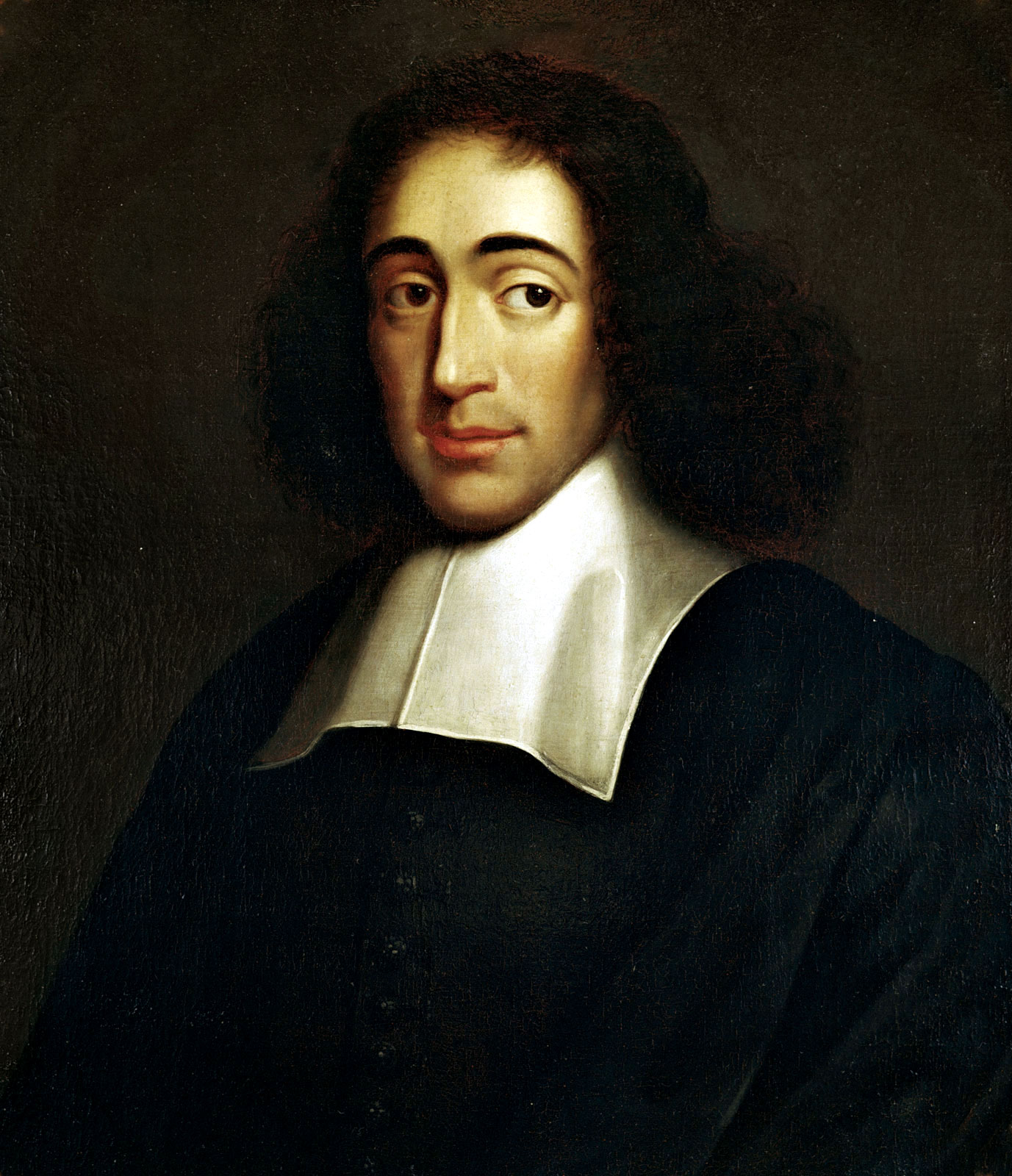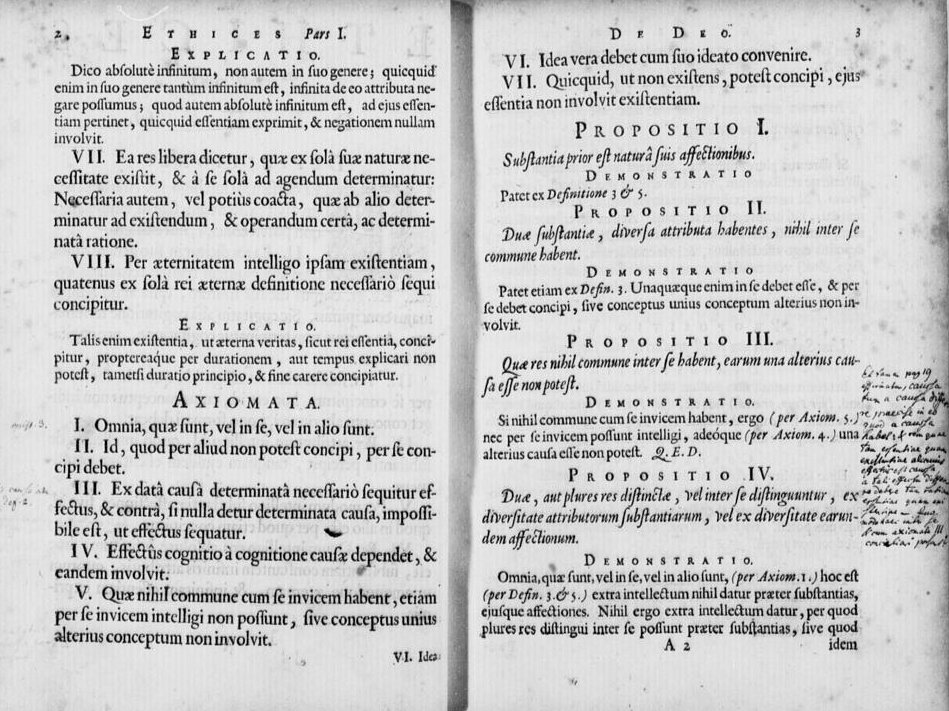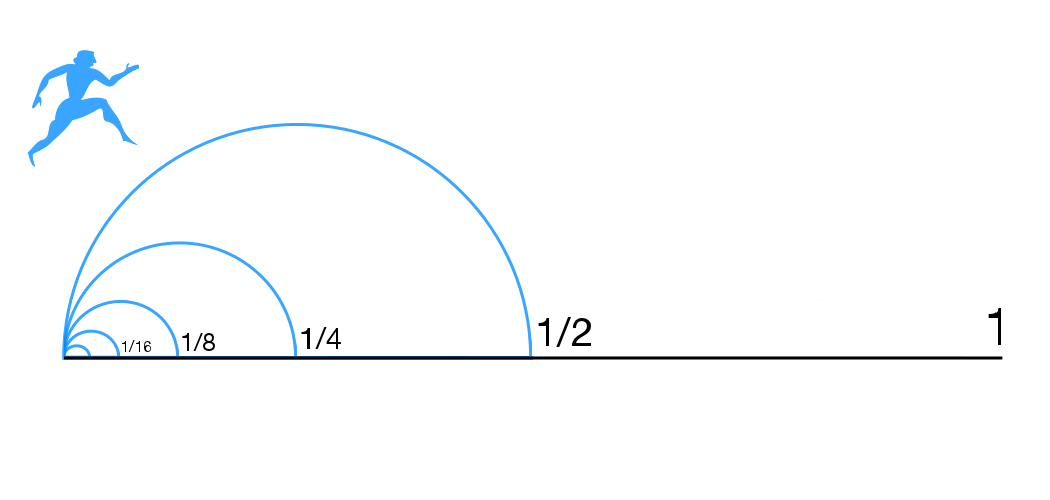|
Conatus
In the philosophy of Baruch Spinoza, conatus (; :wikt:conatus; Latin for "effort; endeavor; impulse, inclination, tendency; undertaking; striving") is an innate inclination of a thing to continue to exist and enhance itself. This ''thing'' may be mind, matter, or a combination of both, and is often associated with God's will in a pantheist view of nature. The ''conatus'' may refer to the instinctive ''will to live'' of living organisms or to various metaphysical theories of motion and inertia. Today, ''conatus'' is rarely used in the technical sense, since classical mechanics uses concepts such as inertia and conservation of momentum that have superseded it. It has, however, been a notable influence on later thinkers such as Arthur Schopenhauer and Friedrich Nietzsche. Definition and origin The Latin '' cōnātus'' comes from the verb '' cōnor'', which is usually translated into English as, ''to endeavor''; used as an abstract noun, ''conatus'' is an innate inclination of a ... [...More Info...] [...Related Items...] OR: [Wikipedia] [Google] [Baidu] |
Ethics (Spinoza)
''Ethics, Demonstrated in Geometrical Order'' () is a philosophical treatise written in Latin by Baruch Spinoza (). It was written between 1661 and 1675 and was first published posthumously in 1677. The ''Ethics'' is perhaps the most ambitious attempt to apply Euclid's method in philosophy. Spinoza puts forward a small number of definitions and axioms from which he attempts to derive hundreds of propositions and corollaries, such as "when the Mind imagines its own lack of power, it is saddened by it", "a free man thinks of nothing less than of death", and "the human Mind cannot be absolutely destroyed with the Body, but something of it remains which is eternal." Summary Part I: Of God The first part of the book addresses the relationship between God and the universe. Spinoza was engaging with a tradition that held that God exists outside of the universe, that God created the universe for a reason, and that God could have created a different universe according to his will. Spi ... [...More Info...] [...Related Items...] OR: [Wikipedia] [Google] [Baidu] |
René Descartes
René Descartes ( , ; ; 31 March 1596 – 11 February 1650) was a French philosopher, scientist, and mathematician, widely considered a seminal figure in the emergence of modern philosophy and Modern science, science. Mathematics was paramount to his method of inquiry, and he connected the previously separate fields of geometry and algebra into analytic geometry. Descartes spent much of his working life in the Dutch Republic, initially serving the Dutch States Army, and later becoming a central intellectual of the Dutch Golden Age. Although he served a Dutch Reformed Church, Protestant state and was later counted as a Deism, deist by critics, Descartes was Roman Catholicism, Roman Catholic. Many elements of Descartes's philosophy have precedents in late Aristotelianism, the Neostoicism, revived Stoicism of the 16th century, or in earlier philosophers like Augustine of Hippo, Augustine. In his natural philosophy, he differed from the Scholasticism, schools on two major point ... [...More Info...] [...Related Items...] OR: [Wikipedia] [Google] [Baidu] |
Inertia
Inertia is the natural tendency of objects in motion to stay in motion and objects at rest to stay at rest, unless a force causes the velocity to change. It is one of the fundamental principles in classical physics, and described by Isaac Newton in his Newton%27s_laws_of_motion#First, first law of motion (also known as The Principle of Inertia). It is one of the primary manifestations of mass, one of the core quantitative properties of physical systems. Newton writes: In his 1687 work ''Philosophiæ Naturalis Principia Mathematica'', Newton defined inertia as a property: History and development Early understanding of inertial motion Joseph NeedhamProfessor John H. Lienhard points out the Mozi (book), Mozi – based on a Chinese text from the Warring States period (475–221 BCE) – as having given the first description of inertia. Before the European Renaissance, the prevailing theory of motion in western philosophy was that of Aristotle (384–322 BCE). On the surface ... [...More Info...] [...Related Items...] OR: [Wikipedia] [Google] [Baidu] |
Gottfried Leibniz
Gottfried Wilhelm Leibniz (or Leibnitz; – 14 November 1716) was a German polymath active as a mathematician, philosopher, scientist and diplomat who is credited, alongside Isaac Newton, Sir Isaac Newton, with the creation of calculus in addition to many other branches of mathematics, such as binary arithmetic and statistics. Leibniz has been called the "last universal genius" due to his vast expertise across fields, which became a rarity after his lifetime with the coming of the Industrial Revolution and the spread of specialized labor. He is a prominent figure in both the history of philosophy and the history of mathematics. He wrote works on philosophy, theology, ethics, politics, law, history, philology, games, music, and other studies. Leibniz also made major contributions to physics and technology, and anticipated notions that surfaced much later in probability theory, biology, medicine, geology, psychology, linguistics and computer science. Leibniz contributed to the ... [...More Info...] [...Related Items...] OR: [Wikipedia] [Google] [Baidu] |
Thomas Hobbes
Thomas Hobbes ( ; 5 April 1588 – 4 December 1679) was an English philosopher, best known for his 1651 book ''Leviathan (Hobbes book), Leviathan'', in which he expounds an influential formulation of social contract theory. He is considered to be one of the founders of modern political philosophy. In his early life, overshadowed by his father's departure following a fight, he was taken under the care of his wealthy uncle. Hobbes's academic journey began in Malmesbury#Westport St Mary, Westport, leading him to the University of Oxford, where he was exposed to classical literature and mathematics. He then graduated from the University of Cambridge in 1608. He became a tutor to the Cavendish family, which connected him to intellectual circles and initiated his extensive travels across Europe. These experiences, including meetings with figures like Galileo, shaped his intellectual development. After returning to England from France in 1637, Hobbes witnessed the destruction and br ... [...More Info...] [...Related Items...] OR: [Wikipedia] [Google] [Baidu] |
Motion
In physics, motion is when an object changes its position with respect to a reference point in a given time. Motion is mathematically described in terms of displacement, distance, velocity, acceleration, speed, and frame of reference to an observer, measuring the change in position of the body relative to that frame with a change in time. The branch of physics describing the motion of objects without reference to their cause is called ''kinematics'', while the branch studying forces and their effect on motion is called '' dynamics''. If an object is not in motion relative to a given frame of reference, it is said to be ''at rest'', ''motionless'', ''immobile'', '' stationary'', or to have a constant or time-invariant position with reference to its surroundings. Modern physics holds that, as there is no absolute frame of reference, Isaac Newton's concept of '' absolute motion'' cannot be determined. Everything in the universe can be considered to be in motion. Motion applie ... [...More Info...] [...Related Items...] OR: [Wikipedia] [Google] [Baidu] |
Gravity
In physics, gravity (), also known as gravitation or a gravitational interaction, is a fundamental interaction, a mutual attraction between all massive particles. On Earth, gravity takes a slightly different meaning: the observed force between objects and the Earth. This force is dominated by the combined gravitational interactions of particles but also includes effect of the Earth's rotation. Gravity gives weight to physical objects and is essential to understanding the mechanisms responsible for surface water waves and lunar tides. Gravity also has many important biological functions, helping to guide the growth of plants through the process of gravitropism and influencing the circulation of fluids in multicellular organisms. The gravitational attraction between primordial hydrogen and clumps of dark matter in the early universe caused the hydrogen gas to coalesce, eventually condensing and fusing to form stars. At larger scales this results in galaxies and clust ... [...More Info...] [...Related Items...] OR: [Wikipedia] [Google] [Baidu] |
Intentionality
Intentionality is the mental ability to refer to or represent something. Sometimes regarded as the ''mark of the mental'', it is found in mental states like perceptions, beliefs or desires. For example, the perception of a tree has intentionality because it represents a tree to the perceiver. A central issue for theories of intentionality has been the problem of ''intentional inexistence'': to determine the ontological status of the entities which are the objects of intentional states. An early theory of intentionality is associated with Anselm of Canterbury's ontological argument for the existence of God, and with his tenets distinguishing between objects that exist in the understanding and objects that exist in reality. The idea fell out of discussion with the end of the medieval scholastic period, but in recent times was resurrected by empirical psychologist Franz Brentano and later adopted by contemporary phenomenological philosopher Edmund Husserl. Today, intentionalit ... [...More Info...] [...Related Items...] OR: [Wikipedia] [Google] [Baidu] |
Integral
In mathematics, an integral is the continuous analog of a Summation, sum, which is used to calculate area, areas, volume, volumes, and their generalizations. Integration, the process of computing an integral, is one of the two fundamental operations of calculus,Integral calculus is a very well established mathematical discipline for which there are many sources. See and , for example. the other being Derivative, differentiation. Integration was initially used to solve problems in mathematics and physics, such as finding the area under a curve, or determining displacement from velocity. Usage of integration expanded to a wide variety of scientific fields thereafter. A definite integral computes the signed area of the region in the plane that is bounded by the Graph of a function, graph of a given Function (mathematics), function between two points in the real line. Conventionally, areas above the horizontal Coordinate axis, axis of the plane are positive while areas below are n ... [...More Info...] [...Related Items...] OR: [Wikipedia] [Google] [Baidu] |
Monad (philosophy)
The term ''monad'' () is used in some cosmic philosophy and cosmogony to refer to a most basic or original substance. As originally conceived by the Pythagoreans, the Monad is therefore Supreme Being, divinity, or the totality of all things. According to some philosophers of the early modern period, most notably Gottfried Wilhelm Leibniz, there are infinite monads, which are the basic and immense forces, elementary particles, or simplest units, that make up the universe. Historical background According to Hippolytus, the worldview was inspired by the Pythagoreans, who called the first thing that came into existence the "monad", which begat (bore) the dyad (from the Greek word for two), which begat the numbers, which begat the point, begetting lines or finiteness, etc. It meant divinity, the first being, or the totality of all beings, referring in cosmogony (creation theories) variously to source acting alone and/or an indivisible origin and equivalent comparators. Py ... [...More Info...] [...Related Items...] OR: [Wikipedia] [Google] [Baidu] |
Zeno's Paradoxes
Zeno's paradoxes are a series of philosophical arguments presented by the ancient Greek philosopher Zeno of Elea (c. 490–430 BC), primarily known through the works of Plato, Aristotle, and later commentators like Simplicius of Cilicia. Zeno devised these paradoxes to support his teacher Parmenides's philosophy of monism, which posits that despite people's sensory experiences, reality is singular and unchanging. The paradoxes famously challenge the notions of plurality (the existence of many things), motion, space, and time by suggesting they lead to logical contradictions. Zeno's work, primarily known from second-hand accounts since his original texts are lost, comprises forty "paradoxes of plurality," which argue against the coherence of believing in multiple existences, and several arguments against motion and change. Of these, only a few are definitively known today, including the renowned "Achilles Paradox", which illustrates the problematic concept of infinite divisibi ... [...More Info...] [...Related Items...] OR: [Wikipedia] [Google] [Baidu] |






